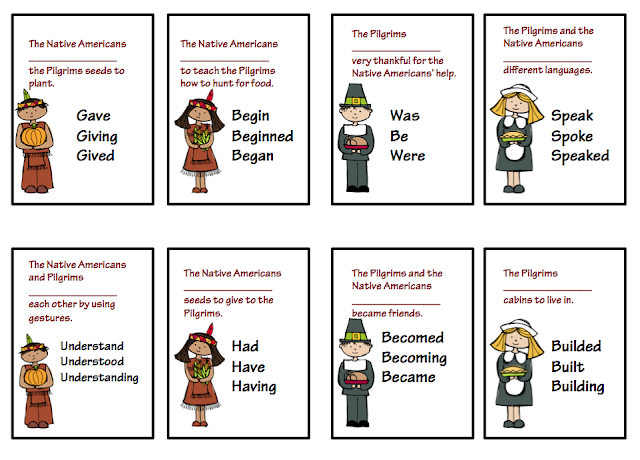Past Simple (= El pasado simple)
El pasado simple en inglés es equivalente al pretérito imperfecto y pretérito indefinido del español porque lo utilizamos para una acción completa en el pasado.
FORMACIÓN
Verbo "be"
Ejemplos:
They were with us yesterday.
Was he an athlete when he was young?
She wasn't sure about the time of the meeting.
OTROS VERBOS
SUBJETO + VERBO + -ED (regular verbs) + 2a lista (irregular verbs*)
- AFIRMACIÓN: She washed the dishes. /She went home early.
- NEGACIÓN: Did she wash ….. / Did she go…..?
- INTERROGACIÓN: She didn’t wash…… / She didn’t go ….
NOTA: En frases interrogativas y negativas, el verbo auxiliar va en pasado (did, didn't) y el verbo principal se queda en el infinitivo.
*Consulta la lista de los verbos irregulares aquí.
PALABRAS "CLAVES"
yesterday, last, ago, in 1970, the previous year/day/month, when
SPELLING RULES
La mayoría de los verbos rgulares forman el Past Simple con la terminación -ed, sin que cambie el tema del verbo.Pero hay algunas exceptiónes:
1. En cuanto a los verbos que terminan en -e, ponemos sólo la terminación -d.
2. Los verbos que terminan en una vocal corta y una consonante (excepto “y” o “w”) duplican el último consonante y después ponemos -ed.
3. Con verbos que terminan en una consonante y una -y, se cambia la “y” por una -ied.
PRACTISE
USOS
El pasado simple se utiliza:1. para hablar de una acción concreta que comenzó y acabó en el pasado. El tiempo en el que la acción ha cuplido se refiere exactamente en la oración con los adverbios de tiempo claves como “last year”, “yesterday”, “last night”, “in 1990”, “two-ten years ago”.
Ejemplos:
Stephanie passed her driving test last week.
Tom stayed at home last night.
I didn’t go to the party yesterday.
Did you finish your studies three years ago?
2. para una serie de acciones en el pasado. Acciones que pasaron consecutivamente.
Ejemplos:
I ate my lunch and then I washed the dishes.
He studied for an hour in the morning, worked all afternoon and didn’t return home until 10 at night.
EJERCICIOS
Multiple choice















